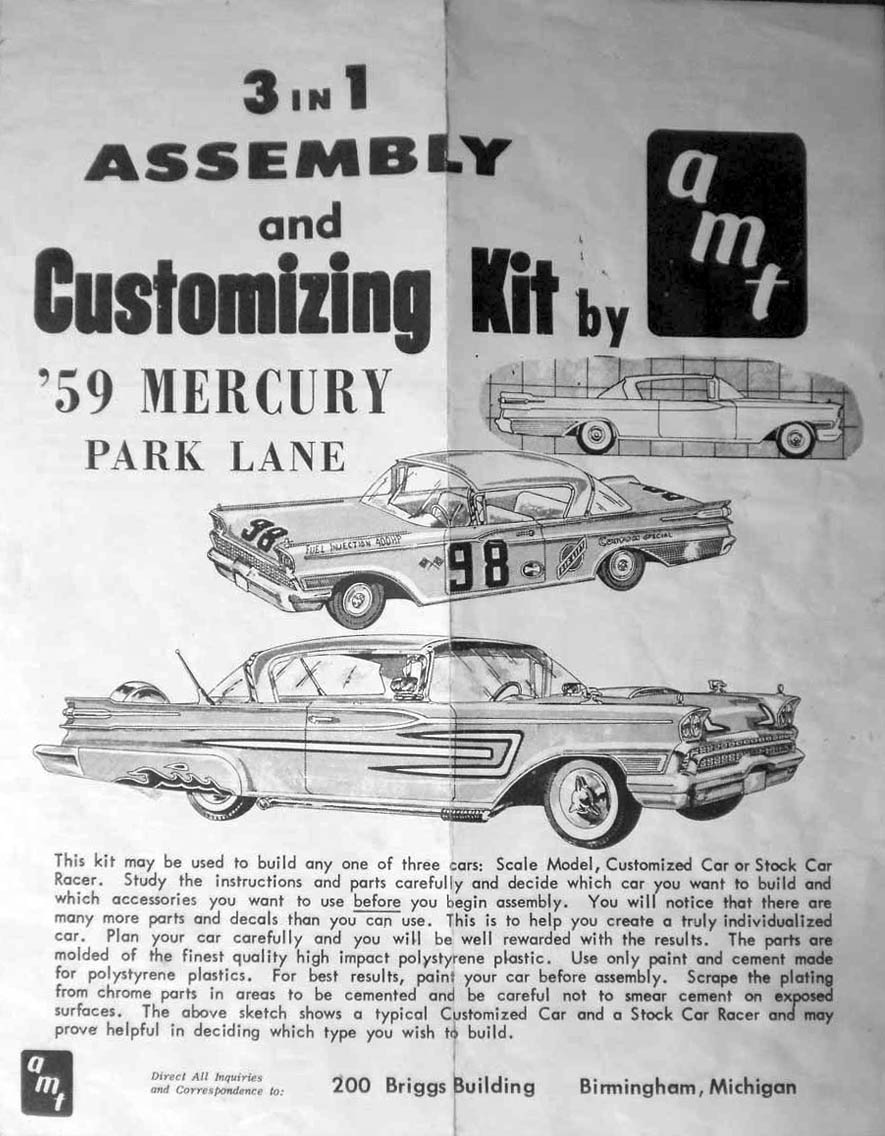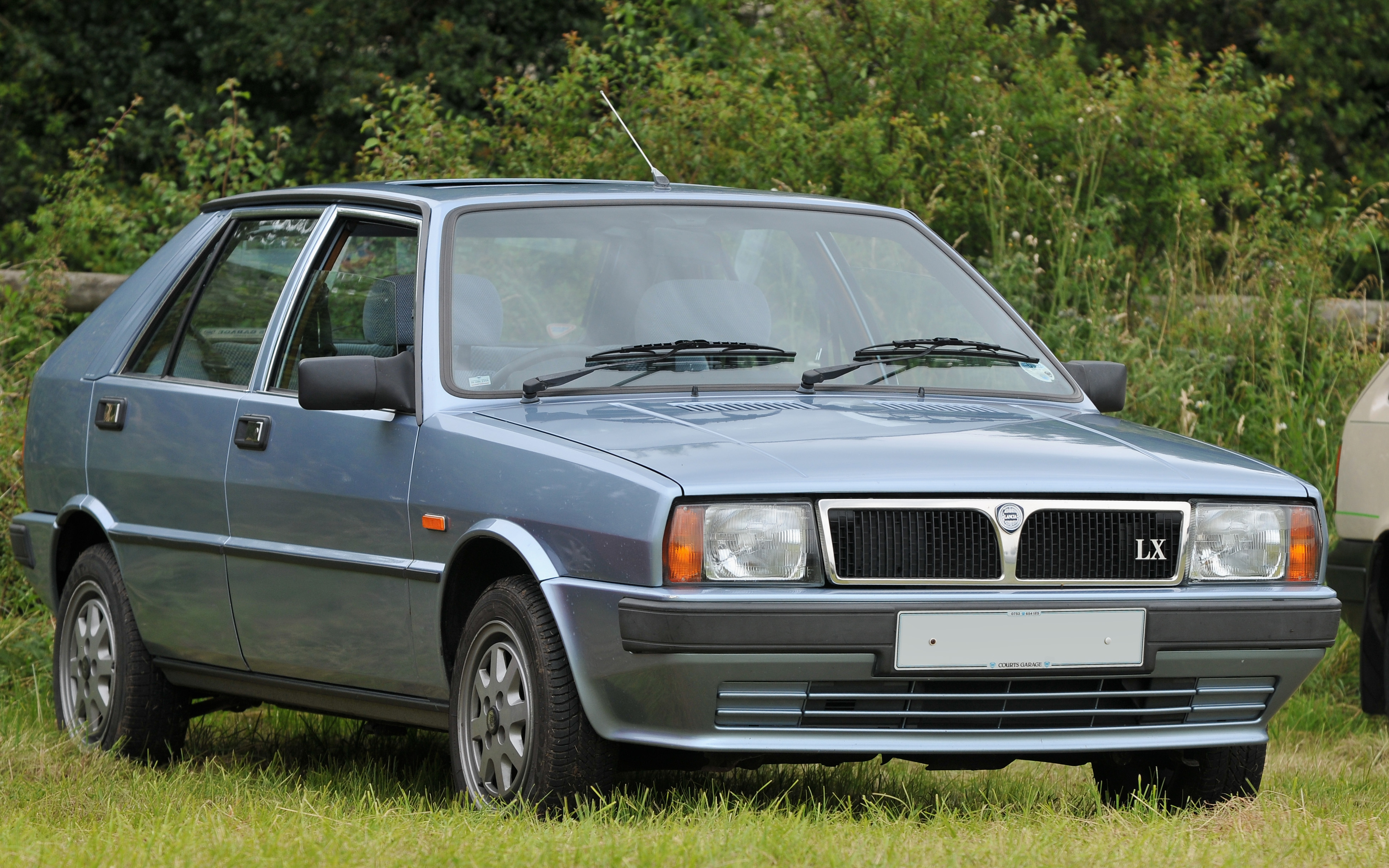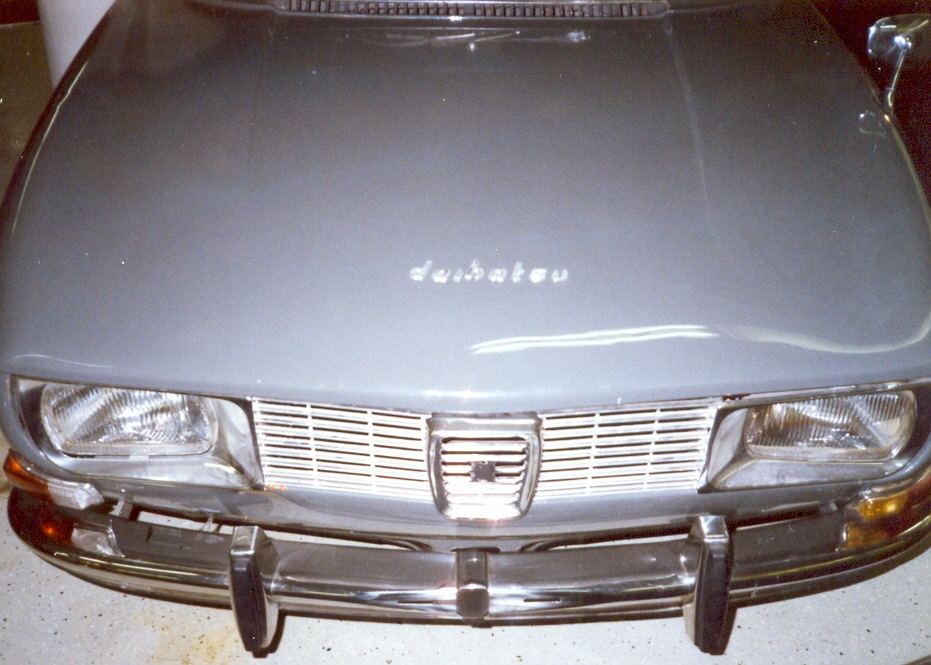|
Stahlberg Models
Stahlberg was a Finnish company producing promotional plastic model cars mainly of Swedish Saab and Volvo automobiles usually in scales between 1:18 and 1:25. Stahlberg mainly molded cars from the 1960s to about 1992, though its modern counterpart, Emek continues to make truck models. Other Finnish companies producing similar sized plastic models were Aren, Emek Muovi, Ju Ju, Hot Toys, KMS Myynti, Muovo, Nyrhinen Ky, and Plasto. Volvos and Saabs Stahlberg vehicles were pre-assembled promotional models. Available mainly through car dealerships in Europe and the U.S., models were produced from about 1965 to about 1990. Usually Stahlbergs were packaged in a clear plastic bag (poly-bagged), though later models did come in blue and white boxes. One writer reminisces that when at the Volvo dealer with his father as a child, he remembers the models often would be "hanging on the pegboard behind the service desk". Some standard Swedish models produced by Stahlberg were the Vol ... [...More Info...] [...Related Items...] OR: [Wikipedia] [Google] [Baidu] |
Model Car
A model car, or toy car, is a miniature representation of an automobile. Other miniature motor vehicles, such as trucks, buses, or even ATVs, etc. are often included in this general category. Because many miniature vehicles were originally aimed at children as playthings, there is no precise difference between a model car and a toy car, yet the word 'model' implies either assembly required or the accurate rendering of an actual vehicle at smaller scale. The kit building hobby became popular through the 1950s, while the collecting of miniatures by adults started to pick up momentum around 1970. Precision-detailed miniatures made specifically for adults are a significant part of the market since the mid-1980s. The scope of the vehicles involved in the hobby, according to Louis Heilbroner Hertz author of ''The Complete Book of Building and Collecting Model Automobiles'', encompasses "ordinary or stock automobiles, racing cars ( hellip;, buses, trucks, specialized service vehicles ... [...More Info...] [...Related Items...] OR: [Wikipedia] [Google] [Baidu] |
Volvo 140 Series
The Volvo 140 Series is a line of mid-size cars manufactured and marketed by Volvo from 1966 to 1974 in two- and four-door sedan (models 142 and 144 respectively) as well as five door station wagon (model 145) body styles—with numerous intermediate facelifts. More than a million Volvo 140s were built. Introduction Volvo Cars began manufacturing the Volvo 144 at Torslandaverken in the late summer of 1966 for the 1967 model year. The 144 series, which followed the Volvo Amazon (120 series, outside of Sweden), was the first Volvo to use a tri-digit nomenclature, where the first digit indicated series, second digit indicated the number of cylinders, and third digit indicated the number of doors. Thus, a "144" was a 1st series, 4-cylinder, 4-door sedan. The 144 was the first Volvo to feature a more rectilinear or boxy styling. Compared to the Volvo Amazon, the 140 was a radical departure with minimal exterior and interior carryover, notably a stylised version of the front split g ... [...More Info...] [...Related Items...] OR: [Wikipedia] [Google] [Baidu] |
Aluminum Model Toys
Aluminum Model Toys (AMT) is a toy manufacturing brand founded in Troy, Michigan in 1948 by West Gallogly Sr. AMT became known for manufacturing 1/25 scale model, scale plastic automobile dealer promotional model cars and friction motor models, and pioneered the annual 3-in-1 model kit buildable in stock, custom car, custom, or hot-rod versions. The company made a two-way deal in 1966 with Desilu Productions to produce a line of ''Star Trek'' models and to produce a 3/4 scale exterior and interior filming set of the Galileo (Star Trek), ''Galileo'' shuttlecraft. It was also known for producing model trucks and movie and TV vehicles. The AMT brand was bought in 1978 by the Lesney company of UK, then by competitor Ertl Company, Ertl in 1983, then by the Round 2 (company), Round 2 company in 2012. Beginning Because Gallogly had solid connections with Ford Motor Company, he was able to place his first models exclusively in Ford dealerships, starting a long promotional relationship. Ga ... [...More Info...] [...Related Items...] OR: [Wikipedia] [Google] [Baidu] |
Toyota Corolla
The is a series of compact cars (formerly subcompact) manufactured and marketed globally by the Toyota Motor Corporation. Introduced in 1966, the Corolla was the best-selling car worldwide by 1974 and has been one of the best-selling cars in the world since then. In 1997, the Corolla became the best-selling nameplate in the world, surpassing the Volkswagen Beetle. Toyota reached the milestone of 50 million Corollas sold over twelve generations in 2021. The name ''Corolla'' is part of Toyota's naming tradition of using names derived from the Toyota Crown for sedans, with ''"corolla"'' Latin for "small crown". The Corolla has always been exclusive in Japan to '' Toyota Corolla Store'' locations, and manufactured in Japan with a twin, called the Toyota Sprinter until 2000. From 2006 to 2018 in Japan and much of the world, and from 2018 to 2020 in Taiwan, the hatchback companion had been called the Toyota Auris. Early models were mostly rear-wheel drive, while later mo ... [...More Info...] [...Related Items...] OR: [Wikipedia] [Google] [Baidu] |
Saab Sonett
The Saab Sonett is an automobile manufactured between 1955 and 1957 and again between 1966 and 1974 by Saab of Sweden. Sonetts share engines and other components with Saab 93, 95 and 96 of the same era. It was mainly intended for the lucrative American export market and was only offered intermittently in the Swedish domestic market (model years 1968 and 1972). The first prototype, now known as the Sonett I, is a two-seat, open-top, lightweight roadster racer which, ten years later, evolved into the commercially distributed Sonett models II, V4, and III. Sonett I In the 1950s, Rolf Mellde—a Saab engine developer and race enthusiast—along with Lars Olov Olsson, Olle Lindkvist, and Gotta Svensson, designed a two-seat roadster prototype in a barn in Åsaka, near Trollhättan (the site of the main Saab manufacturing facility). The limited research-and-development project, with a total budget of only , became known as the ''Sonett'', a name derived from the Swedish phras ... [...More Info...] [...Related Items...] OR: [Wikipedia] [Google] [Baidu] |
Lancia Delta
The Lancia Delta is a small family car produced by Italian automobile manufacturer Lancia in three generations. The first generation (1979-1994) debuted at the 1979 Frankfurt Motor Show, the second generation (1993-1999) debuted at the 1993 Geneva Motor Show, and the third generation (2008-2014) debuted at 2008 Geneva Motor Show. The first generation Delta dominated the World Rally Championship during the late 1980s and early 1990s. The homologation requirements of Group A regulations meant marketing road-going versions of these competition cars — the Lancia Delta HF 4WD and HF Integrale. A total of 44,296 Integrales were produced. First generation The first Delta (''Tipo 831'') was a five-door hatchback, designed by Giorgetto Giugiaro and released in 1979. Between 1980 and 1982, it was also sold in Sweden, Denmark and Norway by Saab Automobile, badged as the "Saab-Lancia 600" to replace the retired 96 model. The Delta was voted the 1980 European Car of the Year. A specia ... [...More Info...] [...Related Items...] OR: [Wikipedia] [Google] [Baidu] |
Saab 600
The Lancia Delta is a small family car produced by Italy, Italian automobile manufacturer Lancia in three generations. The first generation (1979-1994) debuted at the 1979 Frankfurt Motor Show#1979, Frankfurt Motor Show, the second generation (1993-1999) debuted at the 1993 Geneva Motor Show#1993, Geneva Motor Show, and the third generation (2008-2014) debuted at 2008 Geneva Motor Show#2008, Geneva Motor Show. The first generation Delta dominated the World Rally Championship during the late 1980s and early 1990s. The homologation requirements of Group A regulations meant marketing road-going versions of these competition cars — the Lancia Delta HF 4WD and HF Integrale. A total of 44,296 Integrales were produced. First generation The first Delta (''Tipo 831'') was a five-door hatchback, designed by Giorgetto Giugiaro and released in 1979. Between 1980 and 1982, it was also sold in Sweden, Denmark and Norway by Saab Automobile, badge engineering, badged as the "Saab-Lancia 600" ... [...More Info...] [...Related Items...] OR: [Wikipedia] [Google] [Baidu] |
Volkswagen Golf Mk1
The Volkswagen Golf Mk1 is the first generation of a small family car manufactured and marketed by Volkswagen. It was noteworthy for signalling Volkswagen's shift of its major car lines from rear-wheel drive and rear-mounted air-cooled engines to front-wheel drive with front-mounted, water-cooled engines that were often transversely-mounted. Successor to Volkswagen's Beetle, the first generation Golf debuted in Europe in May 1974 with styling by Giorgetto Giugiaro's Italdesign. History Replacing the Beetle; early efforts Volkswagen began producing prototypes of possible Beetle replacements as far back as the early 1950s, and may have received design proposals from Porsche earlier than that. All of the internal projects' names started with "EA", standing for "Entwicklungsauftrag" and meaning "Development assignment". This work began during the tenure of Heinz Nordhoff, who was Director General of Volkswagen from 1948 to 1968. In 1952 the company built the EA41 in colla ... [...More Info...] [...Related Items...] OR: [Wikipedia] [Google] [Baidu] |
Saab 9000
The Saab 9000 is an automobile produced by the Swedish company Saab from 1984 to 1998. Representing the company's foray into the executive car scene, it was developed as a result of the successes of the turbocharged 99 and 900 models. The 9000 remained in production until May 1998 and it was replaced by the Saab 9-5 in late 1997, although some final cars were produced into 1998. The Saab 9000 was only available with petrol engines, as 5-door hatchback or 4-door notchback and never as a convertible (except for one prototype) or a Coupé. Saab designed the 9000 as part of the Type Four platform in conjunction with the Italian automaker Fiat Automobiles. Fiat retailed similar derivative versions as the more basic Fiat Croma, the luxury-themed Lancia Thema, and the sports-oriented Alfa Romeo 164. Unlike the 164, which shares only the chassis, the Croma and Thema are outwardly similar to the 9000. As such, much of the bodywork appeared interchangeable between the 9000, Croma and ... [...More Info...] [...Related Items...] OR: [Wikipedia] [Google] [Baidu] |
Saab 900
The Saab 900 is a mid-sized automobile which was produced by Saab from 1978 until 1998 in two generations; the first from 1978 to 1993, and the second from 1994 to 1998. The first-generation car was based on the Saab 99 chassis, though with a longer front end . The 900 was produced in 2- and 4-door sedan, and 3- and 5-door hatchback configurations and, from 1986, as a cabriolet (convertible) model. There were single- and twin- Zenith carburettor; fuel injected, and turbocharged engines, including both Full Pressure Turbo (FPT), and, in European models during the early 1990s, Low Pressure Turbos (LPT). Saab 900 "Classic" Overview The Saab 900 is a front-engine, front-wheel-drive mid-size car with a longitudinally mounted, 45-degree slanted, inline four-cylinder engine, double wishbone front suspension and beam-axle rear suspension. It was originally introduced on 12 May 1978, for the 1979 model year. Sales commenced in the fall of 1978. Like its predecessor the 99, ... [...More Info...] [...Related Items...] OR: [Wikipedia] [Google] [Baidu] |
Saab 99
The Saab 99 is a car which was produced by Saab from 1968 to 1984; their first foray into a larger class than the 96. While considered a large family car in Scandinavia, it was marketed as a niche compact executive car in most other markets. It was manufactured both in Sweden and Finland and was succeeded by the Saab 900, although the 99 continued to be produced alongside its successor. The Saab 90, an updated, less complex version using many 900 parts took over from the 99 in late 1984. Development On 2 April 1964, Gudmund's day in Sweden, after several years of planning, the Saab board started ''Project Gudmund''. This was a project to develop a new and larger car to take the manufacturer beyond the market for the smaller Saab 96. This new car became the Saab 99, designed by Sixten Sason and unveiled in Stockholm on November 22, 1967. The first prototypes of the 99 were built by cutting a Saab 96 lengthwise and widening it by ; this created the so-called '' Paddan'' (The toa ... [...More Info...] [...Related Items...] OR: [Wikipedia] [Google] [Baidu] |
Volvo 300 Series
The Volvo 300 Series is a rear-wheel-drive small family car sold from 1976 to 1991, both as a hatchback and (from 1984) as a conventional notchback saloon. It was launched in the Netherlands shortly after Volvo acquired a major stake in the passenger car division of DAF in 1973. The series consisted of the Volvo 340 (previously 343/345) and the later Volvo 360. __TOC__ Origins After building a series of compact cars, DAF sought a partner to bring its new larger model, codenamed P900, and intended to become the DAF 77, to market in 1970. Several manufacturers were approached, including Audi, BMW, and Volvo. Volvo was not originally interested due to the cost, but they were later persuaded by DAF's access to Renault engines. This helped Volvo expand its model line-up without the large expenditures associated with developing a new model. Building cars in the Netherlands also helped the Swedish Volvo to access the markets of the EEC, of which Sweden was then not yet a mem ... [...More Info...] [...Related Items...] OR: [Wikipedia] [Google] [Baidu] |




.jpg)


